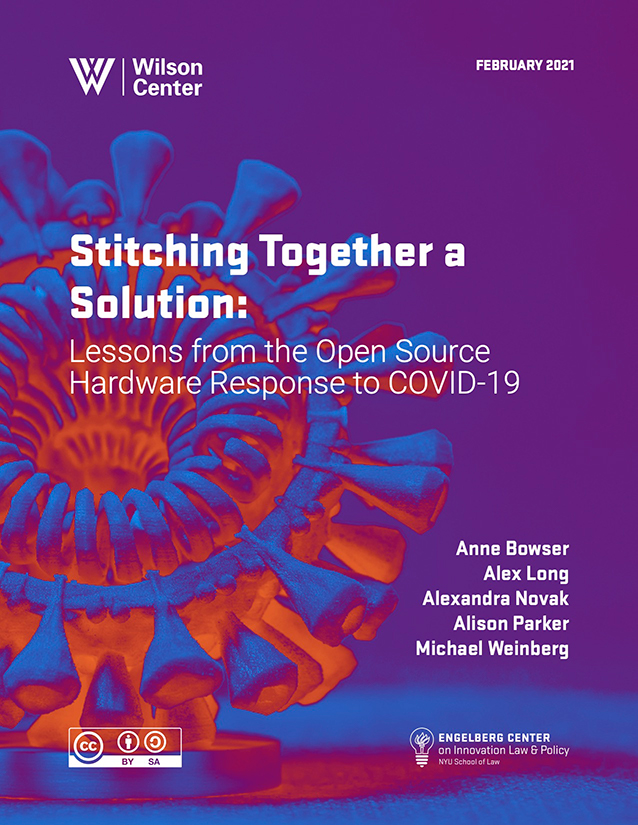This post originally appeared on the Engelberg Center blog
The open source hardware response to COVID-19 was one of the few bright spots in the early days of the virus. Responding to shortages of equipment and supplies, informal, distributed communities came together to design, manufacture, and distribute a wide range of medical equipment where it was needed most.
Today the Engelberg Center, in partnership with the Wilson Center, is proud to announce Stitching Together a Solution: Lessons from the Open Source Hardware Response to COVID-19. Drawn from interviews and discussions with makers, organizations, and government regulators, this whitepaper explores how these efforts came together and details their challenges and successes. It then presents recommendations to help make better use of this flexible, responsive capacity during future crises.
The paper details how grassroots communities came together, often relying on existing ties and networks. It also examines how government regulators learned to interact with these communities in an attempt to support them. While the early months of the response shimmered with possibilities, the collective experiences during that period teach hard lessons and suggest ways to work better in the future.
There are many ways that governments and the open source hardware community can prepare now to support more effective emergency responses in the future. The report contains fifteen specific steps that authorities can take to guarantee that the capacity inherent to the open source hardware community is fully available when it is most needed. These recommendations focus on recognizing the capacity, expanding its capabilities, and preparing to use it more effectively in the future.
You can read the full report here.
